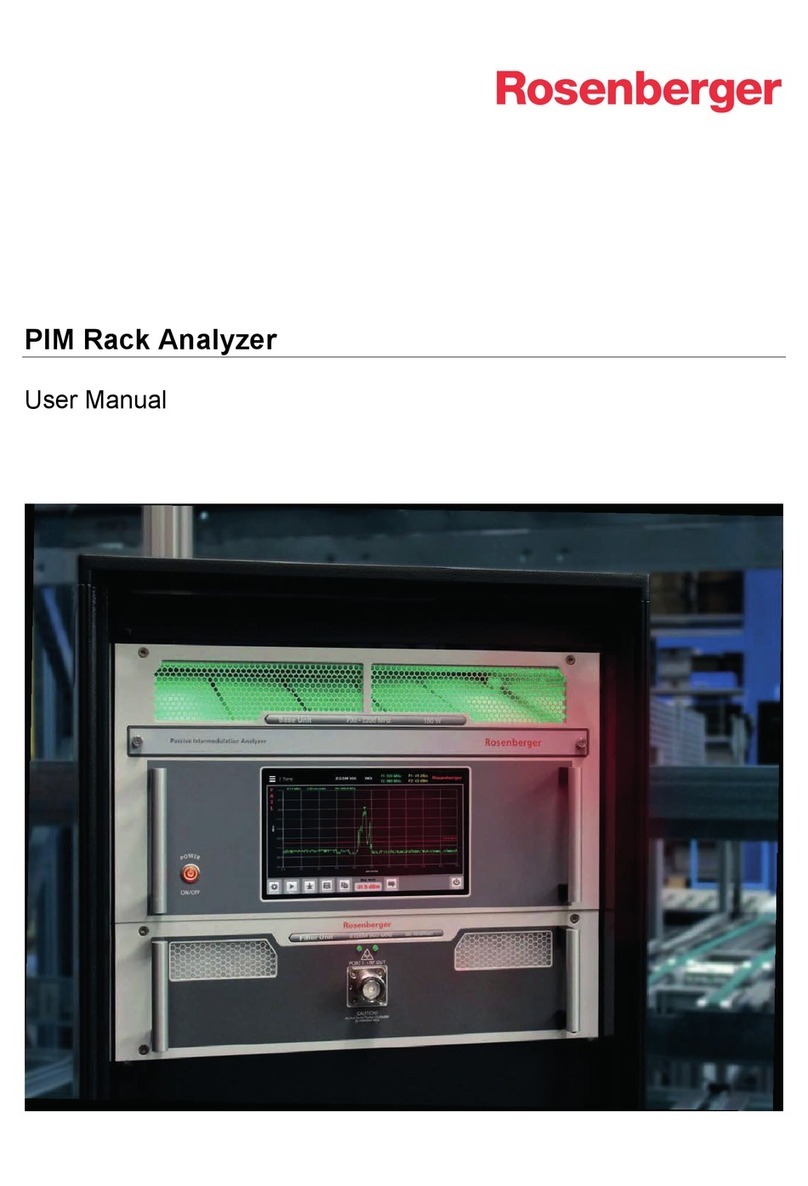PIM Site Analyzer α
Manual
© Rosenberger 2017 - www.rosenberger.com/pia Page 3 of 54
Table of Contents
1General Information and Safety Instructions ..........................................................................................5
2Package Contents ....................................................................................................................................11
3Product Description PIM Site Analyzer α...............................................................................................12
3.1 Overview..................................................................................................................................................12
3.2 Interface Side ..........................................................................................................................................13
3.3 Filter.........................................................................................................................................................14
3.3.1 Changing the filter ................................................................................................................................14
4Setting up the Device...............................................................................................................................15
4.1 Changing SFPs .......................................................................................................................................15
4.2 Battery Operation ....................................................................................................................................15
5Software Operation ..................................................................................................................................16
5.1 Main Menu...............................................................................................................................................16
5.2 Common Settings....................................................................................................................................16
5.2.1 WiFi Configuration................................................................................................................................16
5.2.2 Language / Color Theme......................................................................................................................16
5.3 Device Info...............................................................................................................................................17
5.4 Measurement Screen ..............................................................................................................................18
5.5 Report generation....................................................................................................................................20
5.5.1 Creating reports....................................................................................................................................21
5.6 Updating the PIMAnalyzer Software (Device & Tablet) ..........................................................................23
6Measurement Settings .............................................................................................................................24
6.1 Manual Mode...........................................................................................................................................24
6.2 2 Tone......................................................................................................................................................25
6.3 Sweep......................................................................................................................................................26
6.4 VSWR \ RL ..............................................................................................................................................27
6.5 DTF..........................................................................................................................................................28
6.5.1 Zeroing PIM..........................................................................................................................................28
6.5.2 Zeroing Return Loss.............................................................................................................................29
6.5.3 Setting the velocity factor of the signal path.........................................................................................29
6.6 Isolation ...................................................................................................................................................31
6.7 Power Sweep ..........................................................................................................................................32
6.8 Spectrum Analyzer ..................................................................................................................................33
7Remote Control.........................................................................................................................................34
7.1 Tablet.......................................................................................................................................................34
8Maintenance of the device.......................................................................................................................36
8.1 Handling...................................................................................................................................................36
8.2 Cleaning...................................................................................................................................................36
8.3 Calibration & Repair ................................................................................................................................36
8.4 Fundamental rules for handling fiber optics ............................................................................................37
9Measurement Examples...........................................................................................................................37
9.1 RF Measurements...................................................................................................................................37
9.1.1 PIM acceptance test.............................................................................................................................37
9.1.2 Troubleshooting a PIM problem ...........................................................................................................37
9.1.3 PIM testing flowchart............................................................................................................................38





























